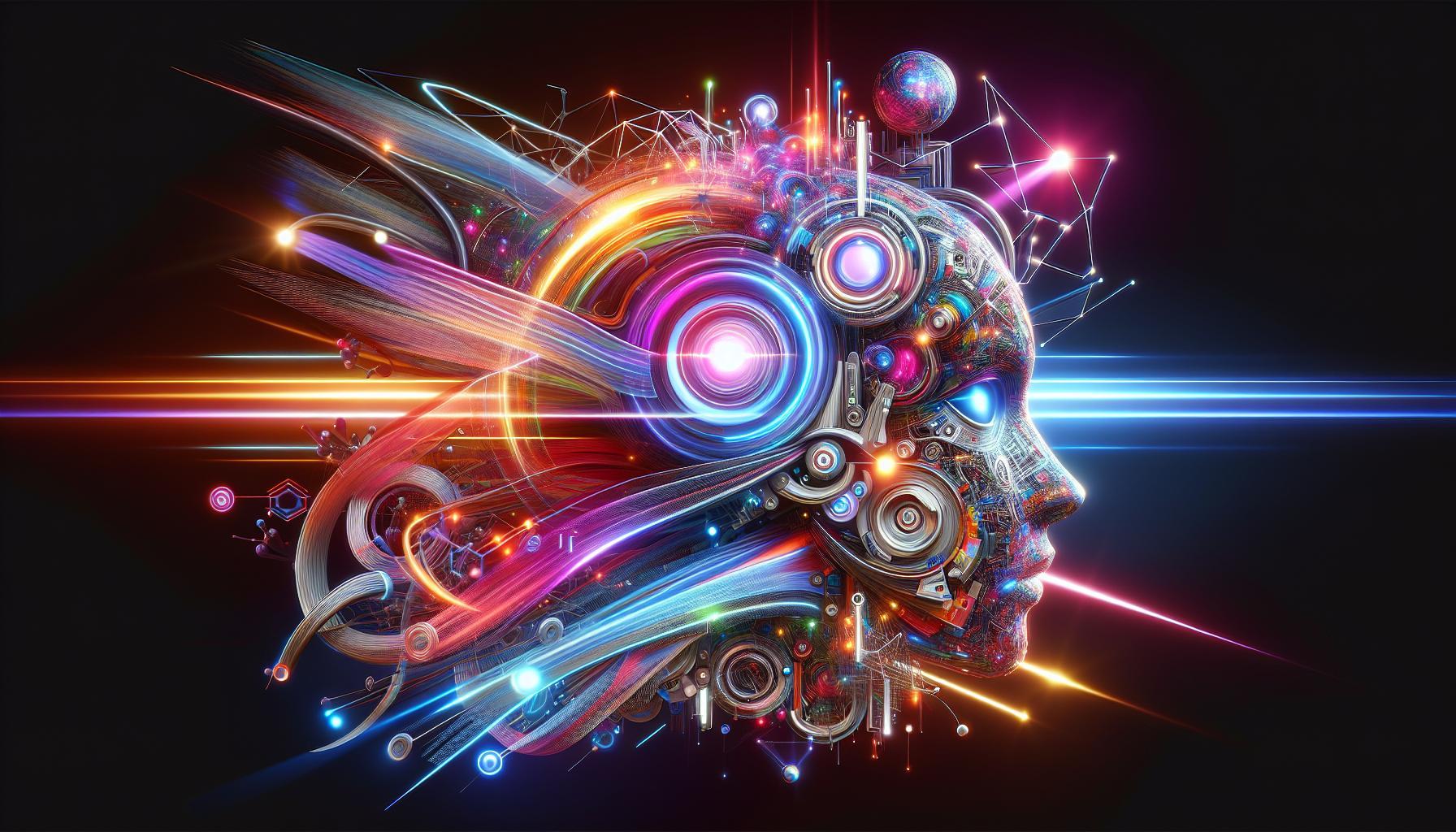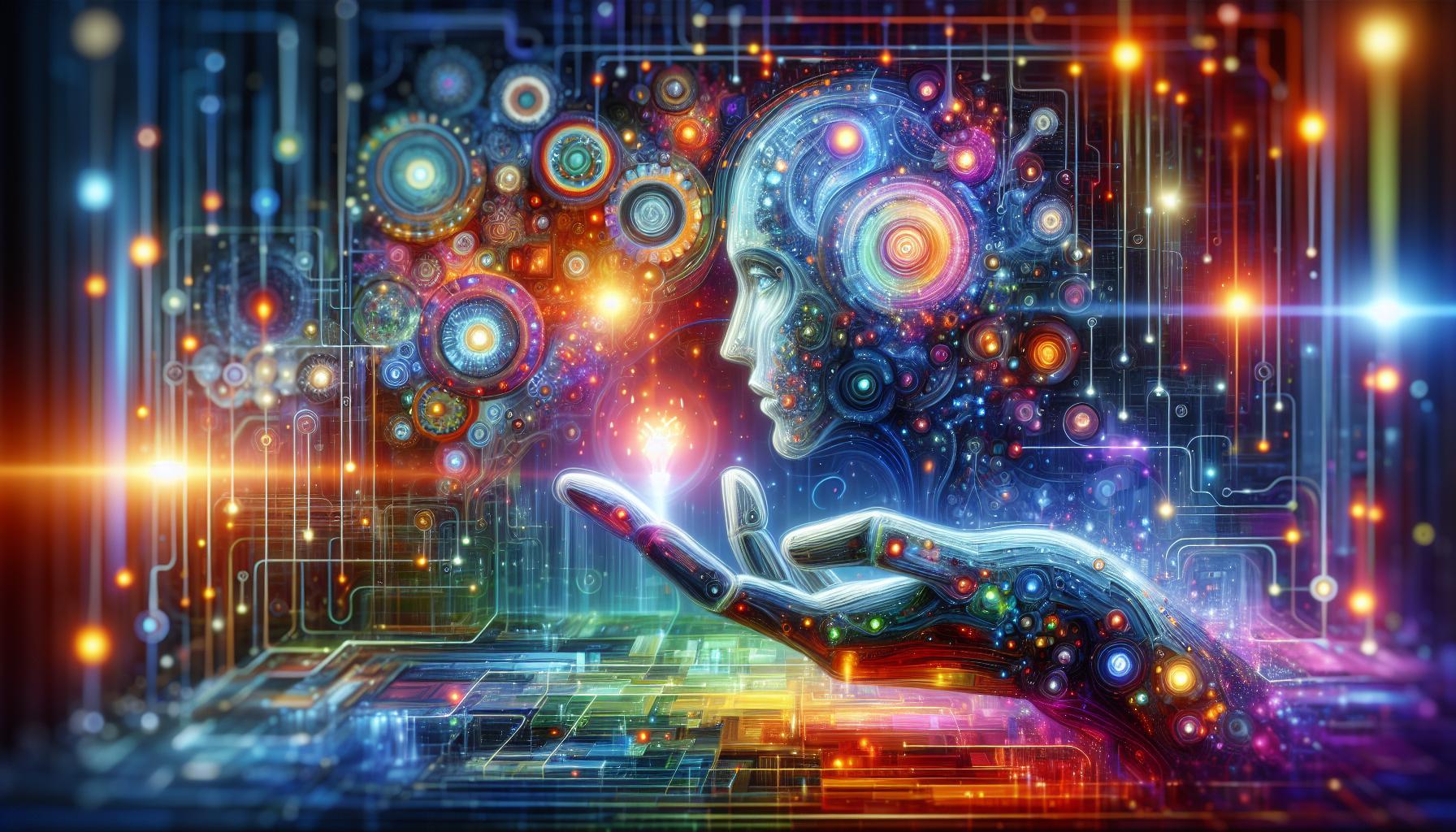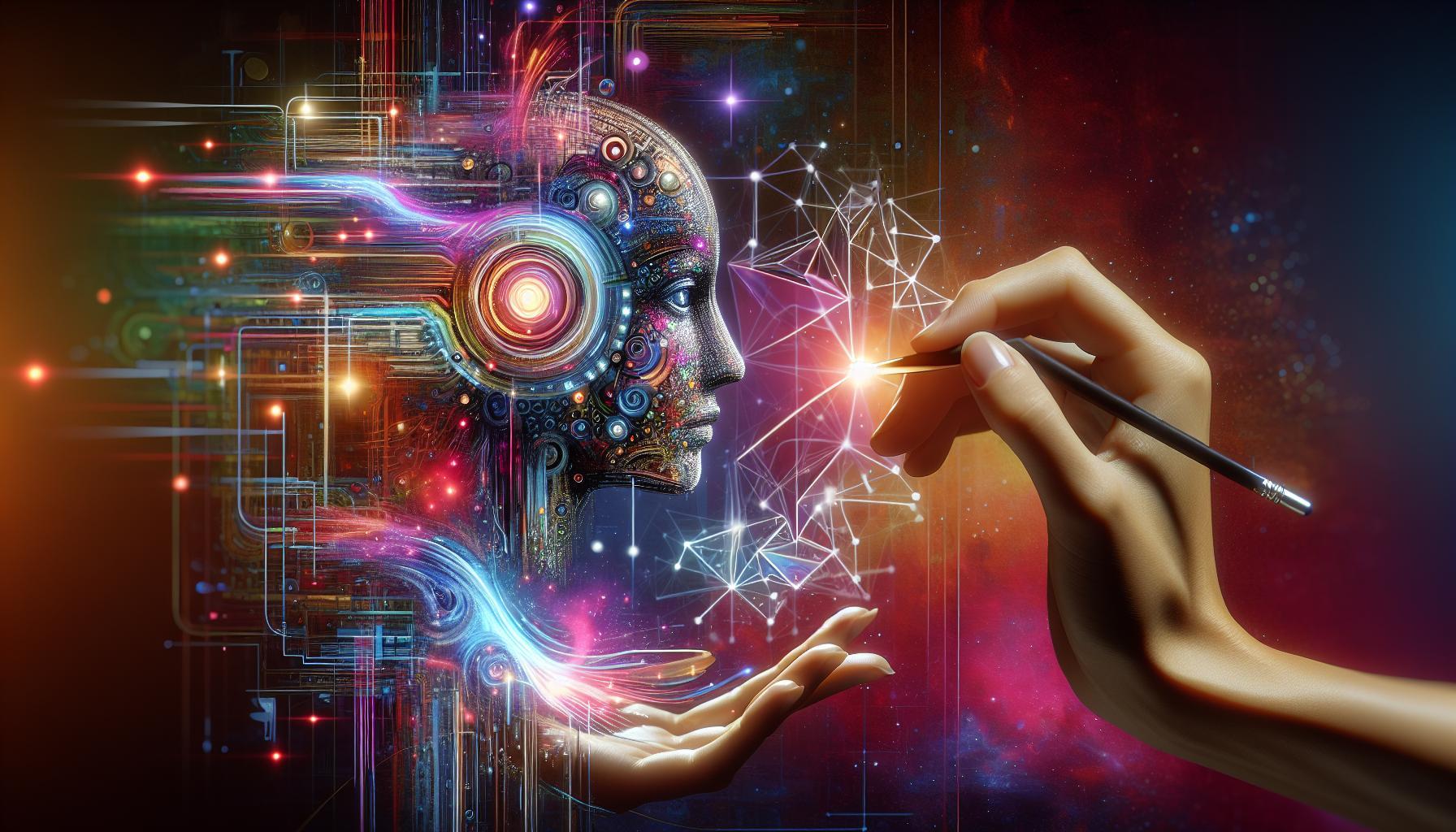As technology evolves, the ability to create lifelike 3D models effortlessly has become a game changer in various industries. This article delves into whether Leonardo AI can indeed generate 3D representations, exploring its innovative capabilities and implications for artists, designers, and developers alike. Discover how AI is transforming the realm of 3D modeling.
Understanding the Basics: What is Leonardo AI and Its Purpose in 3D Modeling?
In the rapidly evolving landscape of digital art and design, tools that blend traditional artistic techniques with cutting-edge technology have become essential for creators. One such innovative tool is Leonardo AI, an AI art generator that specializes in generating detailed images and has expanded its capabilities to 3D modeling. Understanding how Leonardo AI operates and its purpose in 3D modeling offers a glimpse into the future of creative processes and artistic expression.
At its core, Leonardo AI leverages advanced algorithms to transform simple prompts into intricate pieces of art, including three-dimensional models. While primarily known for its 2D capabilities, this tool’s growing interest in 3D modeling enables artists and designers to experiment with spatial design and character development seamlessly. For creators, this means having the power to visualize complex concepts in a three-dimensional space without the steep learning curve associated with traditional 3D modeling software. By utilizing Leonardo AI’s intuitive interface, users can easily produce high-quality 3D models, making the creative process more accessible and efficient.
Here are some key features that enhance Leonardo AI’s purpose in 3D modeling:
- Intuitive Interface: The user-friendly design allows artists to create 3D models without extensive prior knowledge in 3D software.
- Real-Time Feedback: As users input their ideas, the AI generates instant previews, enabling quick iterations and refinements.
- Versatile Art Styles: By providing a range of AI models tailored for different artistic styles, creators can achieve unique aesthetics in their 3D designs.
- Integration with Other Tools: The ability to export models and integrate them with existing workflows makes it a valuable addition for professionals across various domains.
As artists begin to explore how Leonardo AI can aid in 3D model generation, they can undertake projects ranging from character design for video games to architectural visualizations. This capability not only accelerates workflow but also opens up creative avenues that were previously only possible through labor-intensive processes. By asking the critical question, “Can Leonardo AI Generate 3D Models? Exploring 3D Capabilities,” we uncover a powerful tool ready to redefine the boundaries of digital artistry.
As this technology continues to advance, artists and designers stand to benefit immensely from its capabilities, potentially leading to a new era of creativity enhanced by artificial intelligence.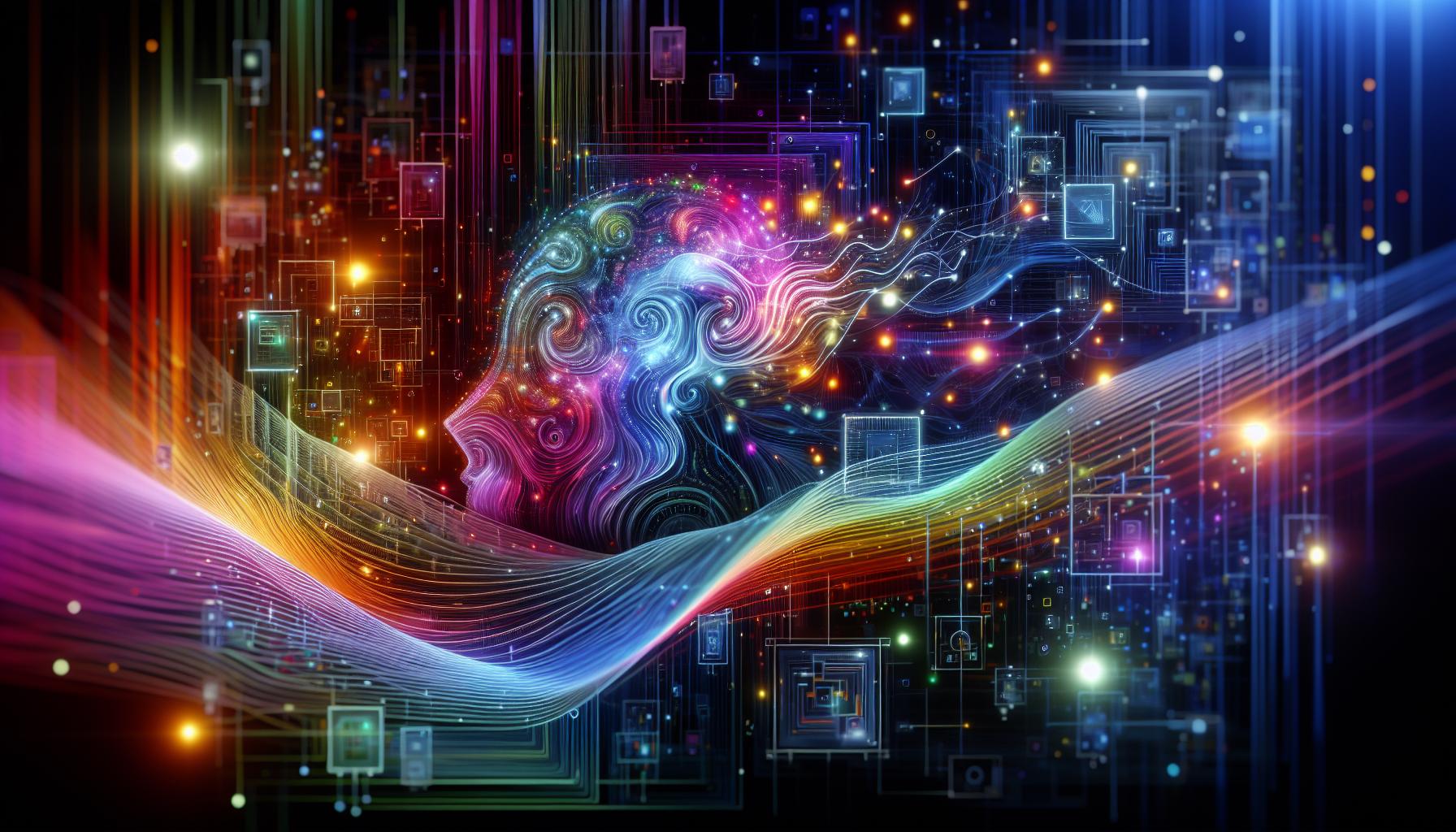
How Does Leonardo AI Create 3D Models? A Step-by-Step Breakdown
Creating intricate and realistic 3D models has traditionally required advanced skills and extensive software expertise. However, with the rapid evolution of artificial intelligence, platforms like Leonardo AI are transforming how these models are generated. Understanding the processes behind Leonardo AI’s 3D capabilities can illuminate how anyone-from seasoned designers to curious novices-can harness this technology.
The Process of 3D Model Creation
Leonardo AI employs a sophisticated multi-step process designed to ensure precision and adaptability in generating 3D models. Here’s how it works:
- Data Input: Users start by providing input data, which can include images, sketches, or even descriptive text. This foundational step is critical, as it guides the AI in understanding the desired features of the 3D model.
- Conceptualization: Once the data is ingested, Leonardo AI uses machine learning algorithms to identify patterns and structures. This phase involves analyzing the input to conceptualize a 3D representation, effectively blending artistry with engineering.
- Model Generation: The core of Leonardo AI’s capability lies in its ability to generate the actual 3D model. Through iterative processes, the AI constructs a digital version, fine-tuning dimensions, textures, and other attributes to create a lifelike representation.
- Refinement: After the initial model creation, users can fine-tune features, experimenting with various elements like color schemes or textural details. Leonardo AI offers feedback and suggestions, enhancing the collaborative effort between user and machine.
- Export Options: Finally, once the model meets the user’s satisfaction, it can be exported in various formats suitable for diverse applications, whether it’s for 3D printing, virtual reality environments, or animation.
Real-World Applications
Leonardo AI’s innovative approach has broad implications across various industries. From gaming and film production to educational tools and architectural visualization, the ability to create 3D models rapidly can significantly enhance workflow efficiency. For instance, game developers can quickly prototype characters and environments, saving precious time during the design phase.
| Industry | Application | Benefit |
|---|---|---|
| Gaming | Character and environment design | Accelerated prototyping speeds |
| Architecture | Building and landscape visualization | Enhanced client presentations |
| Education | Interactive learning materials | Improved student engagement |
With this understanding of Leonardo AI’s process for generating 3D models, it becomes clear that the technology is not just a tool for designers but an enabler of creativity across various fields.
Comparing Leonardo AI’s 3D Capabilities with Traditional Modeling Techniques
The rise of artificial intelligence in creative fields has revolutionized how 3D models are generated and manipulated. Leonardo AI stands out with its innovative approach to 3D modeling, offering a stark contrast to conventional modeling techniques. Traditional methods often require significant time and skill, utilizing software such as Blender or Maya, where artists painstakingly sculpt every detail. In contrast, Leonardo AI harnesses generative algorithms that can produce complex 3D models in a fraction of the time, making advanced 3D design accessible to a broader audience.
One of the most compelling advantages of using Leonardo AI is its ability to generate designs based on simple user inputs. This contrasts with traditional modeling, where artists must have an extensive understanding of geometry and software tools. With Leonardo AI, users can describe what they envision, and the AI interprets this input into a 3D model. This capability not only speeds up the design process but also allows for rapid iteration. Users can experiment with variations without the steep learning curve associated with conventional modeling software.
Key Comparisons
When evaluating Leonardo AI’s 3D modeling capabilities against traditional techniques, several factors become apparent:
| Feature | Leonardo AI | Traditional Modeling |
|---|---|---|
| Time Efficiency | Rapid generation from prompts | Lengthy manual processes |
| User Skill Requirement | Minimal; user-friendly | High; requires extensive training |
| Design Iteration | Instant modifications | Time-consuming revisions |
| Creativity Enhancement | Encourages experimentation | Often limited by skill |
In addition to these practical benefits, Leonardo AI’s unique suite of tools allows artists and designers to explore creative boundaries previously thought unattainable. The integration of AI not only expedites workflow but also inspires novel design concepts, making it a valuable ally in modern design practices. As the technology continues to evolve, the question “Can Leonardo AI Generate 3D Models?” becomes increasingly relevant, urging traditional modelers to reconsider the potential of blending AI with artistic expression. This collaborative future not only enhances the creative process but also enriches the output quality and variety in the field of 3D modeling.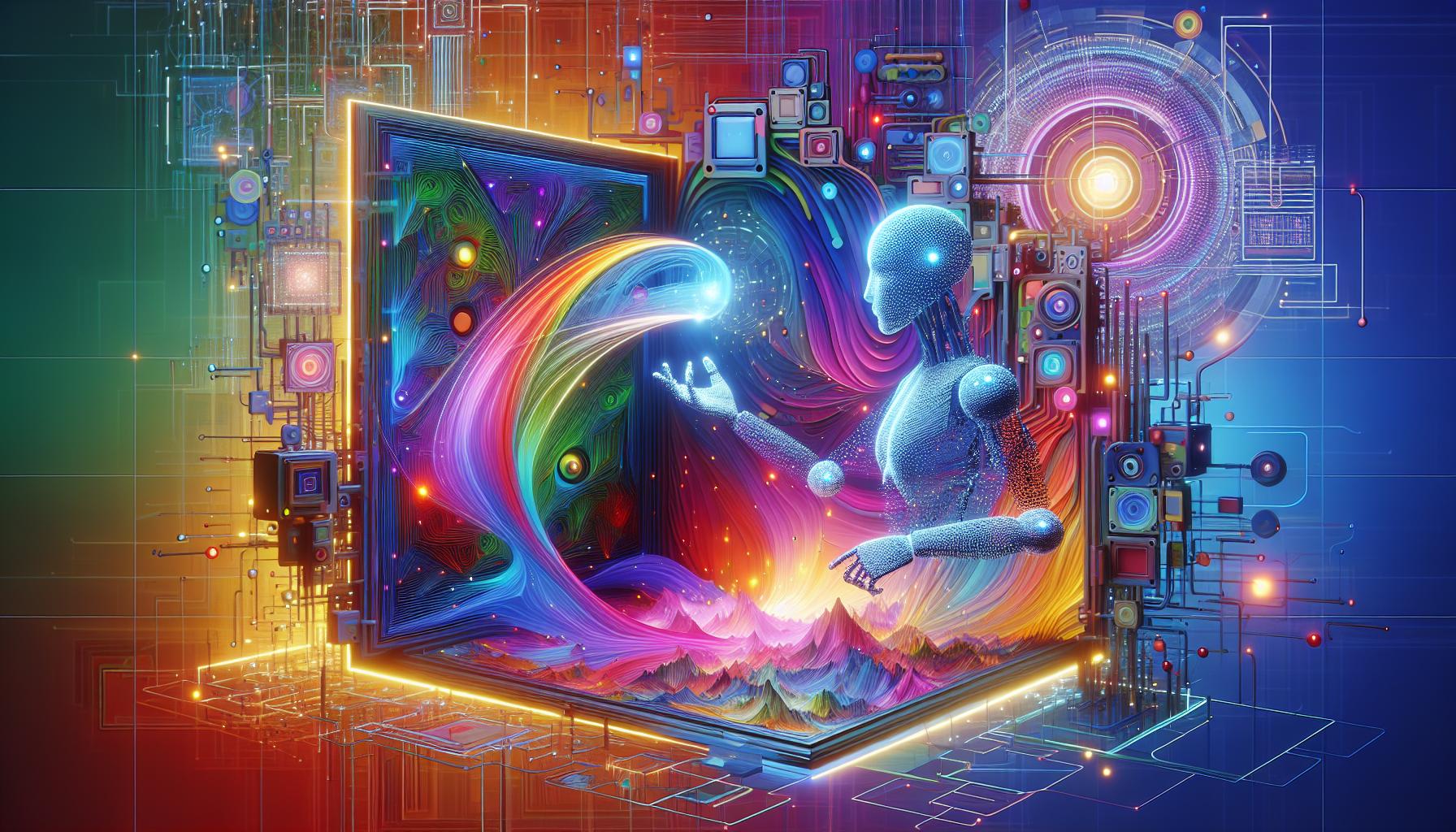
Real-World Applications: Industries Benefiting from Leonardo AI’s 3D Model Generation
The advent of advanced AI technologies has transformed various sectors, with 3D model generation being one of the most impactful applications. Leonardo AI stands out with its capabilities in producing detailed and customizable 3D models that cater to a wide array of industries. Notably, this innovation is enhancing workflows by streamlining the design process, significantly reducing time and costs.
Architectural Design
In architectural design, Leonardo AI is revolutionizing the creation of 3D models for buildings and landscapes. Designers can generate intricate representations of structures with precision, allowing for more accurate visualizations before construction begins. This means stakeholders can engage with models that reflect their vision, making adjustments based on realistic projections. As a result, projects can proceed with fewer revisions and improved client satisfaction.
Entertainment and Gaming
The entertainment industry, particularly gaming, is another field reaping the benefits of Leonardo AI’s 3D modeling capabilities. Developers are able to quickly create high-quality 3D characters and environments, which is crucial for maintaining the immersive experiences modern gamers demand. By utilizing Leonardo AI, game designers can experiment with various styles and elements, ultimately enhancing the creative process and expediting product releases.
Manufacturing and Product Design
In manufacturing, 3D models generated with Leonardo AI facilitate rapid prototyping, allowing companies to visualize and test designs before moving to production. This is particularly essential in industries like automotive and aerospace where precision is crucial. By integrating AI into the design phase, manufacturers can optimize their products, ensure functionality, and reduce the risk of costly errors.
Healthcare and Medical Devices
The healthcare industry is also finding substantial value in 3D model generation. Leonardo AI assists in creating models of anatomical structures for educational purposes, surgical planning, and even custom prosthetics. These accurate 3D representations enable medical professionals to prepare better for surgeries and offer personalized solutions for patients.
| Industry | Application | Benefits |
|---|---|---|
| Architectural Design | 3D visualization of buildings | Enhanced stakeholder engagement, fewer revisions |
| Entertainment | Character and environment modeling | Faster development, improved user experience |
| Manufacturing | Rapid prototyping of products | Cost reduction, optimized designs |
| Healthcare | 3D anatomical models | Better surgical preparation, custom solutions |
As the question of whether Leonardo AI can generate 3D models continues to gain traction, its ability to serve multiple industries effectively illustrates its versatility and potential to reshape how professionals approach design and visualization. This technology not only enhances creativity but also paves the way for innovation across sectors, making it a valuable asset in the digital age.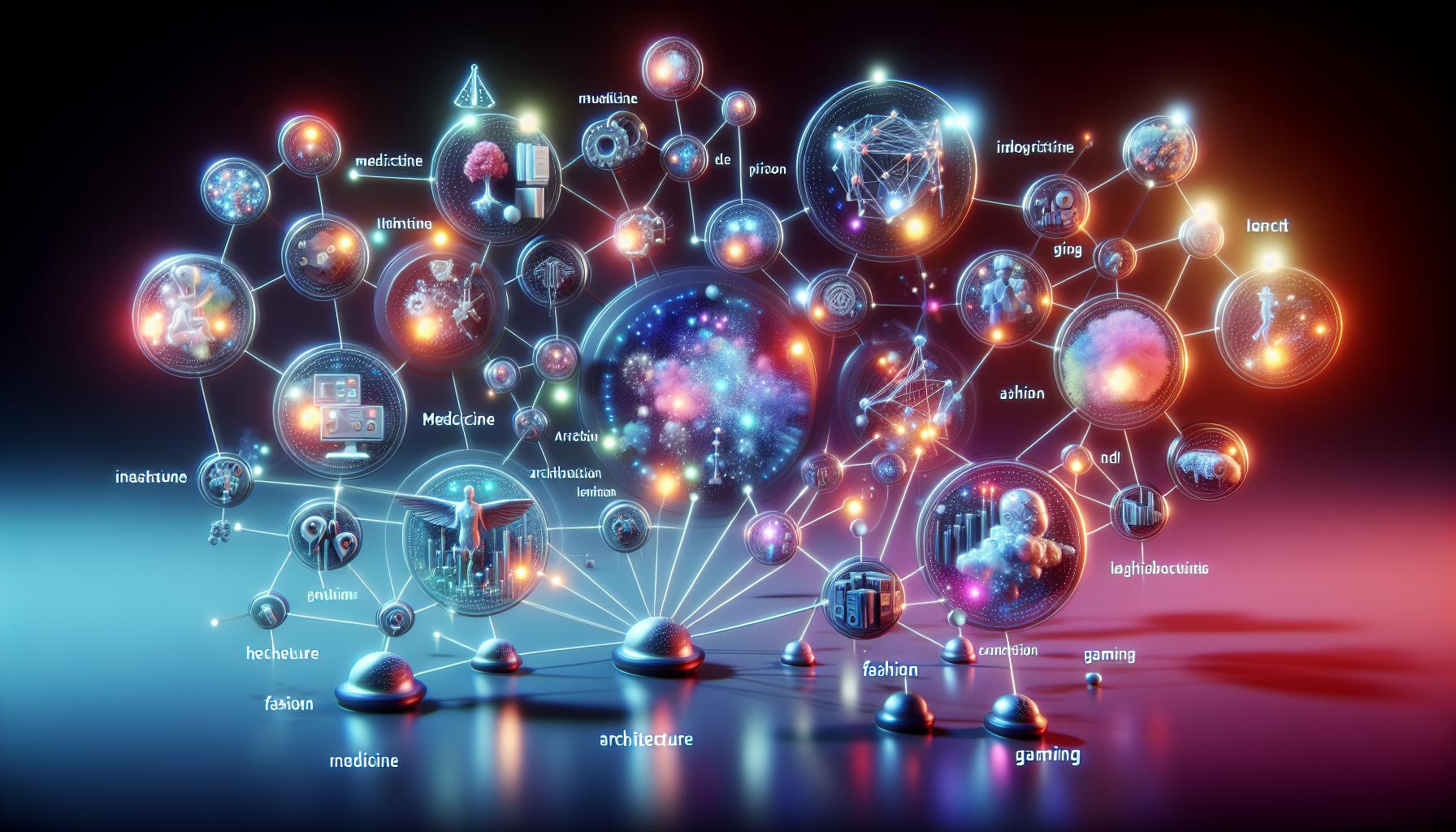
Tips for Getting Started: Using Leonardo AI for Your First 3D Project
Getting started with Leonardo AI can feel like stepping into a new dimension of creativity, especially when embarking on your first 3D project. The technology has made it possible for both seasoned artists and newcomers to explore the intricate world of 3D modeling with ease. Before diving in, it’s essential to equip yourself with a few strategies that can elevate your initial experience and help you maximize the platform’s potential.
Familiarize Yourself with Leonardo AI’s Interface
Before you start your first project, take some time to explore Leonardo AI’s user interface. Understanding how to navigate the tools and features can significantly streamline your workflow. Here are some tips:
- Explore Templates: Begin with pre-existing templates to see how various elements are structured. This exposure can provide you with a clearer understanding of what’s possible within the platform.
- Utilize Tutorials: Leonardo often includes video tutorials or guided tours-don’t skip these! They can demystify complex functions and ensure you’re utilizing the software efficiently.
- Experiment with Features: Take a hands-on approach by experimenting with different tools. Even simple actions, like adjusting lighting or textures, can yield impressive results in your 3D creations.
Start Small and Define Your Project
Instead of overwhelming yourself with overly ambitious ideas, start with a manageable project. This could be as simple as modeling an everyday object, such as a coffee cup or a chair. Define the scope clearly by:
- Choosing a Focus: Select one or two main features to work on, such as shading and texture mapping.
- Sketching Your Idea: Create a rough sketch of your concept. Visualizing your end goal can help you maintain direction.
- Setting Realistic Goals: Outline the steps involved in your project. This makes the process less daunting and keeps you motivated as you complete each milestone.
Utilize Community Resources
Leonardo AI boasts a vibrant community of creators. Engaging with others can provide valuable insights and support. Here’s how you can tap into this resource:
| Resource | Description |
|---|---|
| Forums and Discussion Groups | Join forums specific to Leonardo AI. These forums often feature discussions about troubleshooting, project showcases, and tips. |
| Social Media Groups | Participate in social media communities where users share their 3D models and experiences. |
| Webinars and Workshops | Attend live events organized by Leonardo AI or its user community to learn directly from experienced modelers. |
By employing these strategies, you can set yourself up for success in your first 3D project with Leonardo AI. With a little patience and creativity, the possibilities for your projects are nearly limitless in exploring and generating captivating 3D models.
Exploring User Experiences: Feedback and Success Stories with Leonardo AI
Engaging with advanced tools like Leonardo AI has opened up new frontiers for creators across various industries. Users have begun to share their experiences and success stories, illustrating the powerful capabilities of this innovative platform, especially in the realm of 3D model generation. Feedback often highlights the seamless integration of AI-generated visuals into projects, showcasing how quickly and effectively creators can realize their concepts.
User Insights on 3D Modeling Capabilities
Many artists and designers describe Leonardo AI as a game-changer in their workflow. One user, a game designer, reported, “Using Leonardo AI to generate 3D models has drastically reduced my design time. I can input specific parameters, and within minutes, I have multiple iterations to choose from.” This kind of efficiency allows designers to focus more on creativity rather than getting bogged down by technical details. The intuitive interface and robust algorithm contribute to users feeling empowered to experiment and push creative boundaries.
Real-World Applications and Success Stories
The versatility of Leonardo AI has led to a variety of applications, from character modeling in video games to architectural visualizations. For instance, a small architectural firm utilized Leonardo AI to generate detailed 3D models of buildings, which enhanced their client presentations significantly. They noted, “The quality of the visuals created using Leonardo AI exceeded our expectations and impressed our clients, leading to more contracts.” Such successes further solidify the platform’s reputation as a reliable partner for professionals seeking to elevate their projects.
The collective feedback from users indicates that not only does Leonardo AI streamline the modeling process, but it also enhances the overall creativity involved. As artists and designers share their positive experiences, it’s clear that the ability to generate high-quality 3D models effortlessly is not just a dream but a reality that Leonardo AI has made possible. This momentum can inspire even more creators to explore how they can integrate 3D capabilities into their workflows, pushing the limits of what’s artistically achievable.
Overcoming Challenges: Troubleshooting Common Issues in 3D Model Creation with AI
Creating 3D models with AI, specifically using tools like Leonardo AI, can be an exciting yet complex venture. As with any technology, users may encounter challenges that can hinder their creative process. Understanding how to troubleshoot these common issues can drastically improve your experience and output quality.
Common Issues and Solutions
Some prevalent problems encountered in AI-generated 3D modeling include unexpected output, rendering inaccuracies, and difficulty integrating models into existing designs. Here are several practical solutions to address these challenges:
- Unexpected Output: When the generated model does not align with your vision, adjust the input parameters. This could involve refining the prompts given to the AI, incorporating more specific details about design elements, colors, or functionality that you desire.
- Rendering Inaccuracies: If a model appears distorted or lacks detail upon rendering, consider increasing the resolution or adjusting the rendering settings. Sometimes, simply refreshing the rendering engine or restarting the software can resolve these glitches.
- Integration Issues: For problems integrating the 3D model into existing projects, ensure compatibility among different software tools by using standard file formats (such as STL or OBJ). This helps in minimizing data loss and maintaining quality during transfers.
Real-World Examples
Many users have faced issues while utilizing AI in their creative workflows. For instance, a designer attempting to generate a complex architectural model with Leonardo AI might find that the floors and walls are misaligned. In such cases, they could revisit their input, perhaps specifying the dimensions and structural elements more clearly. Another common scenario involves texturing-some users may inadvertently skip this step, leading to flat, lifeless renders. It is crucial to invest time in applying textures and materials to enhance realism.
| Issue | Solution | Example |
|---|---|---|
| Unexpected Output | Refine input parameters. | Specify more details about desired features. |
| Rendering Inaccuracies | Increase resolution and check settings. | Refresh the rendering process. |
| Integration Issues | Use standard file formats. | Convert models to STL/OBJ before loading. |
By familiarizing yourself with these troubleshooting tips, you can enhance your ability to create stunning and precise 3D models using AI technology. Embracing the iterative nature of design, where revisions and refinements are seen as part of the learning curve, will lead to more successful outcomes. Keep exploring the capabilities of AI and remember that each challenge presents an opportunity to improve your craft.
The Future of 3D Modeling: How AI Tools Like Leonardo Are Shaping the Industry
As technology continues to advance at a breathtaking pace, the integration of AI in 3D modeling promises to revolutionize the creative landscape. The evolution from traditional artistic techniques to AI-driven platforms has prevented bottlenecks and elevated the creative process, allowing designers to focus on innovative ideas rather than laborious technical details. One standout player in this transformative movement is Leonardo AI, which is proving to be an invaluable tool for both amateur and professional artists looking to explore the vast potential of 3D rendering.
The Role of AI in 3D Modeling
AI technologies like Leonardo have pioneered ways to generate intricate 3D models with minimal input, effectively democratizing the art of 3D design. By utilizing machine learning algorithms, these tools analyze vast amounts of data, recognizing patterns and generating outputs that often exceed traditional modeling speeds. Some of the key benefits of AI-driven 3D modeling tools include:
- Faster Production Time: Reduces the time from concept to execution, enabling artists to produce high-quality work efficiently.
- Enhanced Creativity: Provides artists with new ideas and perspectives, helping to overcome creative blocks.
- User-Friendly Interfaces: Simplifies complex tasks, allowing even those with limited technical skills to create stunning 3D visuals.
Real-World Applications of Leonardo AI in 3D Modeling
The practical impact of AI tools like Leonardo is already evident across various industries. For instance, in the gaming sector, developers are leveraging AI to create realistic environments and characters with rich textures and lifelike movements without spending countless hours on manual modeling. In architecture, firms are incorporating AI-generated models to visualize designs efficiently, enabling clients to experience spaces before they are built. Moreover, product designers are employing these technologies to quickly iterate on ideas, dramatically shortening the time to market for new innovations.
| Industry | Use Case | AI Contribution |
|---|---|---|
| Gaming | Creating detailed game environments and assets | Speeding up model generation and enhancing visual quality |
| Architecture | Visualizing designs and client presentations | Allowing rapid design iterations and client feedback integration |
| Product Design | Prototyping new products | Reducing development time and costs |
In summary, the fusion of AI with 3D modeling through tools like Leonardo is transforming the way designers conceive and execute their visions. As the industry evolves, understanding how to harness these AI capabilities will be crucial for staying ahead in a competitive landscape. Embracing such technologies not only enhances productivity but also expands the horizons of what is achievable in 3D design.
Q&A
Can Leonardo AI Generate 3D Models? Exploring 3D Capabilities
Yes, Leonardo AI can generate 3D models! It leverages advanced algorithms to create three-dimensional visual assets for various projects, such as animations or architectural designs. Users can expect high-quality, customizable 3D outputs.
Leonardo AI remains a versatile tool, targeting a range of artistic needs. Its 3D capabilities are enhanced by user-friendly interfaces that allow anyone to produce complex models without extensive technical skills. By combining AI-generated images with 3D dimensions, creators can bring their visions to life in exciting new ways.
How do I create 3D models using Leonardo AI?
Creating 3D models with Leonardo AI is straightforward. First, access the platform, select the 3D model option, and follow the step-by-step guidelines to customize your design.
Start by specifying dimensions and style preferences; then, the AI takes over, generating the 3D model based on your inputs. You can adjust parameters to refine the output. For more detailed guidance, check out our comprehensive tutorials on using Leonardo AI tools.
What types of 3D models can Leonardo AI produce?
Leonardo AI can create various types of 3D models. This includes character models, architectural designs, and environmental assets, suitable for games, simulations, or animations.
The flexibility of Leonardo AI allows users to experiment with different styles and formats, adapting the resulting models to their specific needs. Whether for professional projects or personal creativity, the AI accommodates a broad range of applications.
Why does Leonardo AI stand out for 3D generation?
Leonardo AI stands out due to its blend of quality, speed, and user customization. The platform utilizes advanced AI models tailored for various art styles, ensuring unique outputs.
The customizable features allow users to fine-tune their models easily. Moreover, the consistent quality of generated assets makes it an excellent choice for both novice creators and seasoned professionals.
Can I edit the 3D models created by Leonardo AI?
Yes, editing 3D models generated by Leonardo AI is possible. The platform provides several options for further modifications, allowing users to personalize and enhance their designs after the initial generation.
You can tweak dimensions, textures, and colors, or even adjust lighting for realistic effects. This flexibility helps in perfecting the final product to match your specific vision. Additionally, exporting features allow easy integration into larger projects.
What are the limitations of 3D generation with Leonardo AI?
While powerful, Leonardo AI has some limitations in 3D generation. The output quality can depend on input specifications and may not meet advanced needs for complex animations.
Higher-tier models may require more customization or manual adjustments to achieve desired effects. Understanding these limitations helps users set realistic expectations and consider supplementary tools for enhanced functionality.
Is Leonardo AI suitable for beginners in 3D modeling?
Absolutely, Leonardo AI is highly suitable for beginners. Its user-friendly interface and guided workflows simplify the 3D model creation process.
The platform provides intuitive controls, enabling new users to produce quality results with minimal prior experience. Tutorials and support materials are also available, making the journey into 3D modeling both accessible and enjoyable.
Key Takeaways
As we conclude our exploration of Leonardo AI’s potential to generate 3D models, it’s clear that this technology is more than just a futuristic tool-it’s an accessible gateway for both novice and experienced creators. By breaking down complex concepts like neural networks and digital rendering, we’ve seen how AI can simplify the modeling process, allowing anyone to breathe life into their visions with just a few clicks.
Remember, whether you’re looking to create stunning visual art, prototype innovative designs, or simply experiment for fun, engaging with AI tools like Leonardo can transform your creative experience. As you delve deeper, consider experimenting with the various features discussed here, and embrace the iterative nature of learning-each attempt will pave the way for growth and discovery.
So, don’t hesitate! Dive back into your projects, try out new functionalities, and continue your journey in the fascinating world of AI-generated 3D models. The technology is evolving rapidly; stay curious and keep pushing the boundaries of what’s possible. Your next great creation is just a click away!

